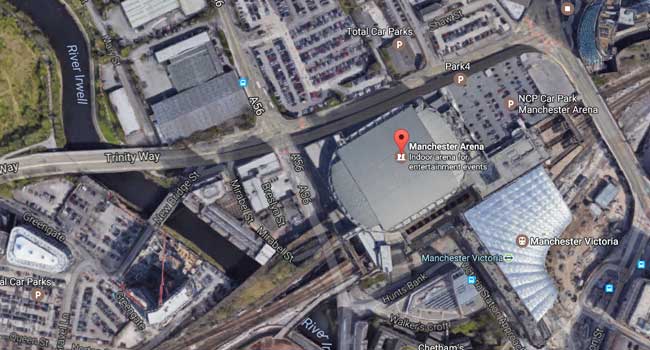
Witnesses Say Concert Security was Lax before Bombing
Concert-goers have slammed “lax security” at the Ariana Grande show that was targeted this week in a terrorist attack
Police have identified the suicide-bomber in the Manchester attack as Salman Abedi but they have yet to figure out how he was able to detonate a bomb in the rotunda area of the arena where families and teens were enjoying an Ariana Grande concert.
Since the explosion, witnesses have come forward telling local news stations that the arena security was very lax as they entered the venue. Many say the security guards were more interested in whether or not the attendees were carrying water bottles than checking bags for weapons.
Three weeks prior to the incident, a woman who was in attendance at an Ed Sheeran concert at the same arena voiced her concern on security measures on TripAdvisor. According to her comment, the arena security guards just scanned her ticket and let her in without having her pass through a medal detector or bag check.

Security experts believe that the lone wolf chose the weakest part of the stadium to attack: the exit. As people flooded out of the stadium area after Grande’s encore performance Abedi detonated a “very sophisticated device” that could be heard from inside the stadium and blocks away in neighborhoods surrounding the area.
Others who were at the stadium said they did not see security as they left the arena after the bomb exploded. The only instruction attendees had was from a voice coming over the loud speaker in the arena telling people to “take your time. No problems here.”
Since the explosion, security around the world has been beefed up. Arenas and venues in the United States, Norway and France have seen additional units deployed despite the fact there are no credible or specific threats to the areas.